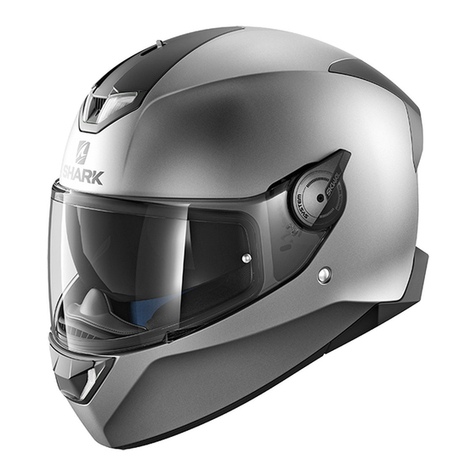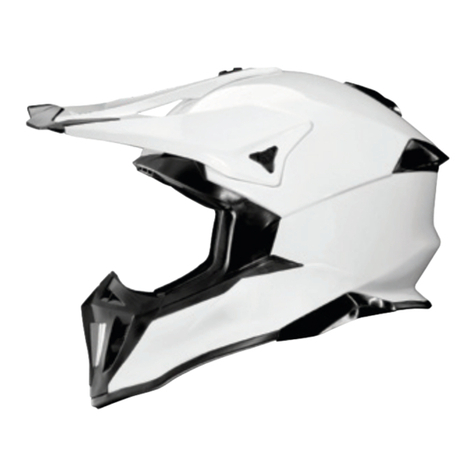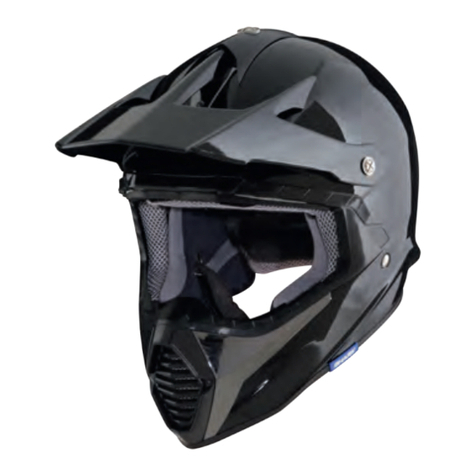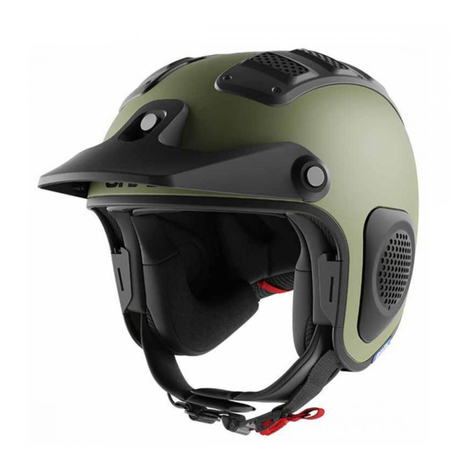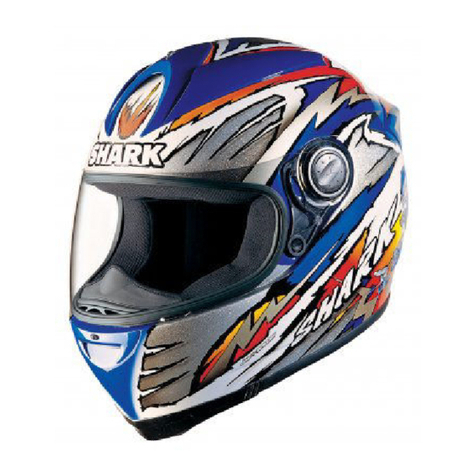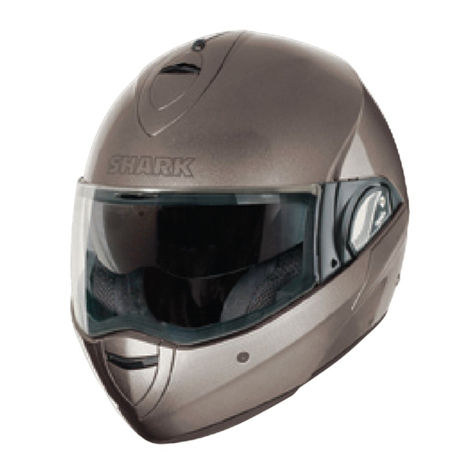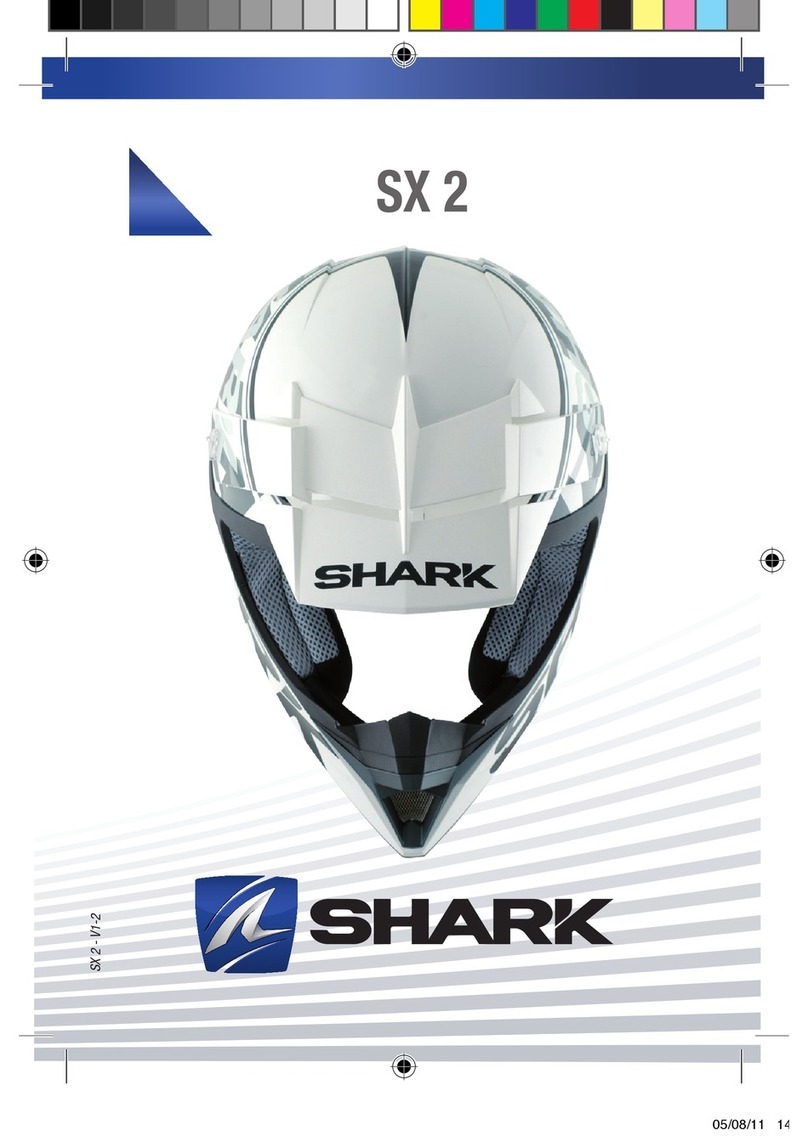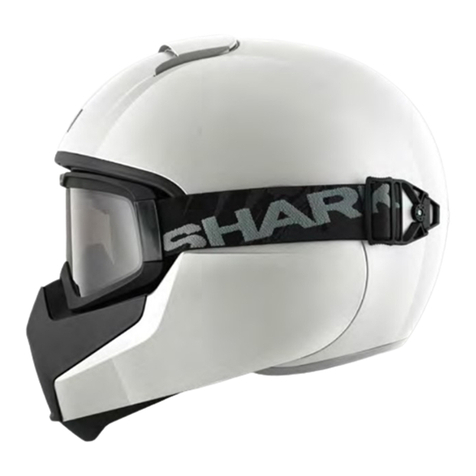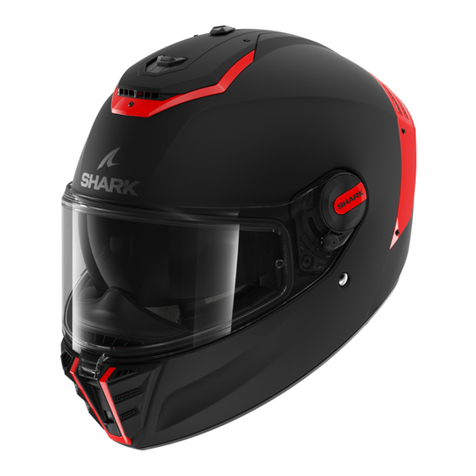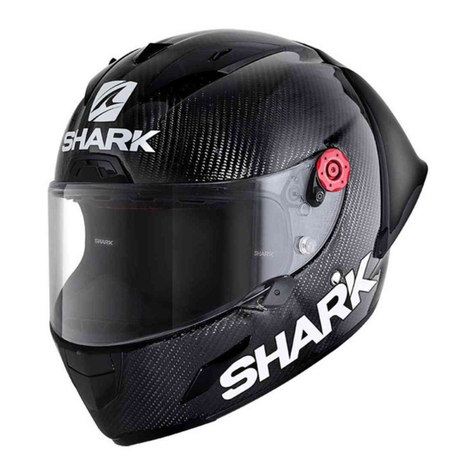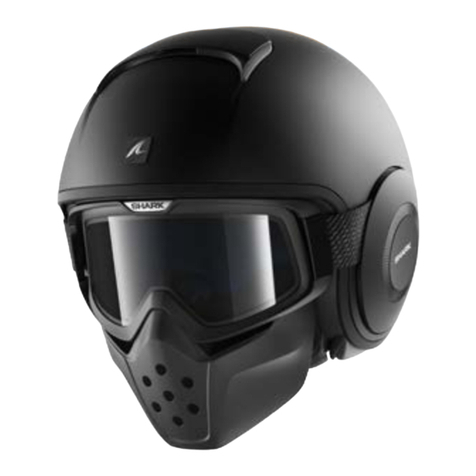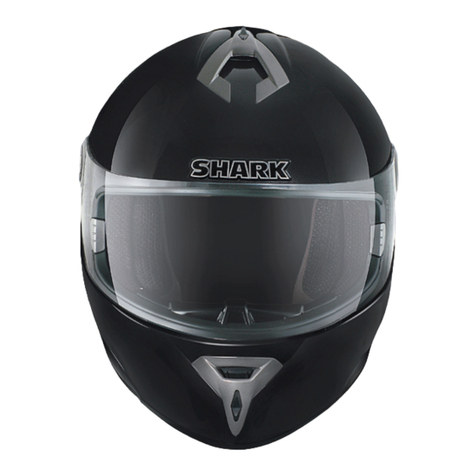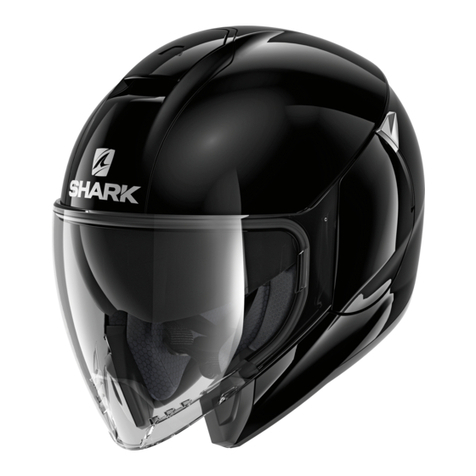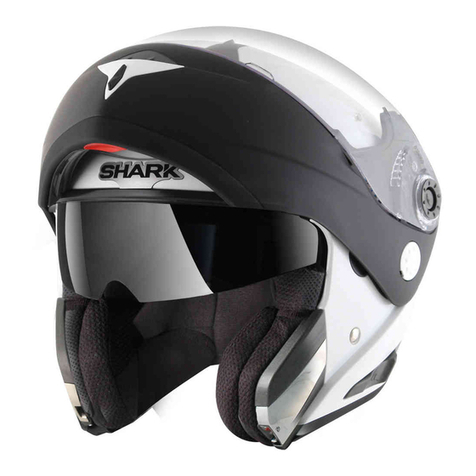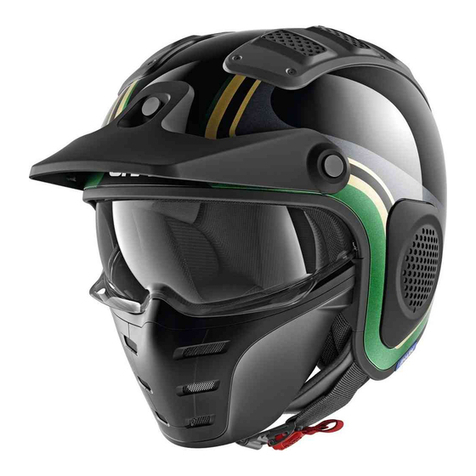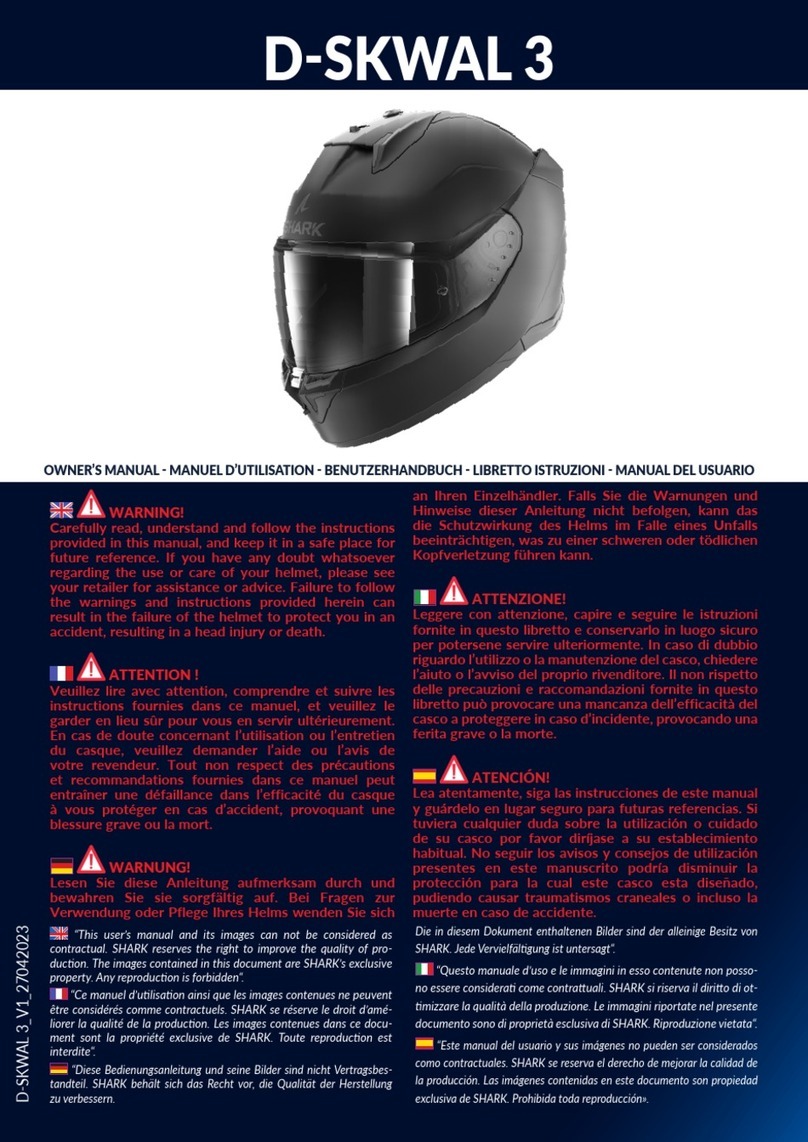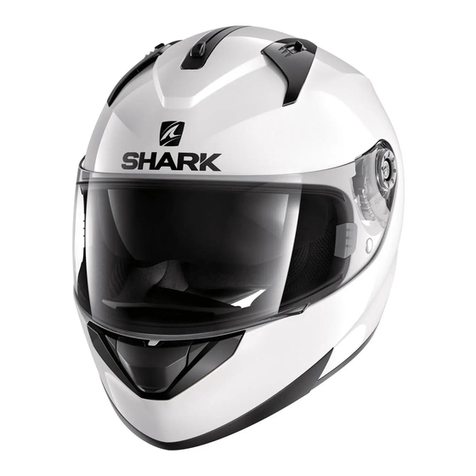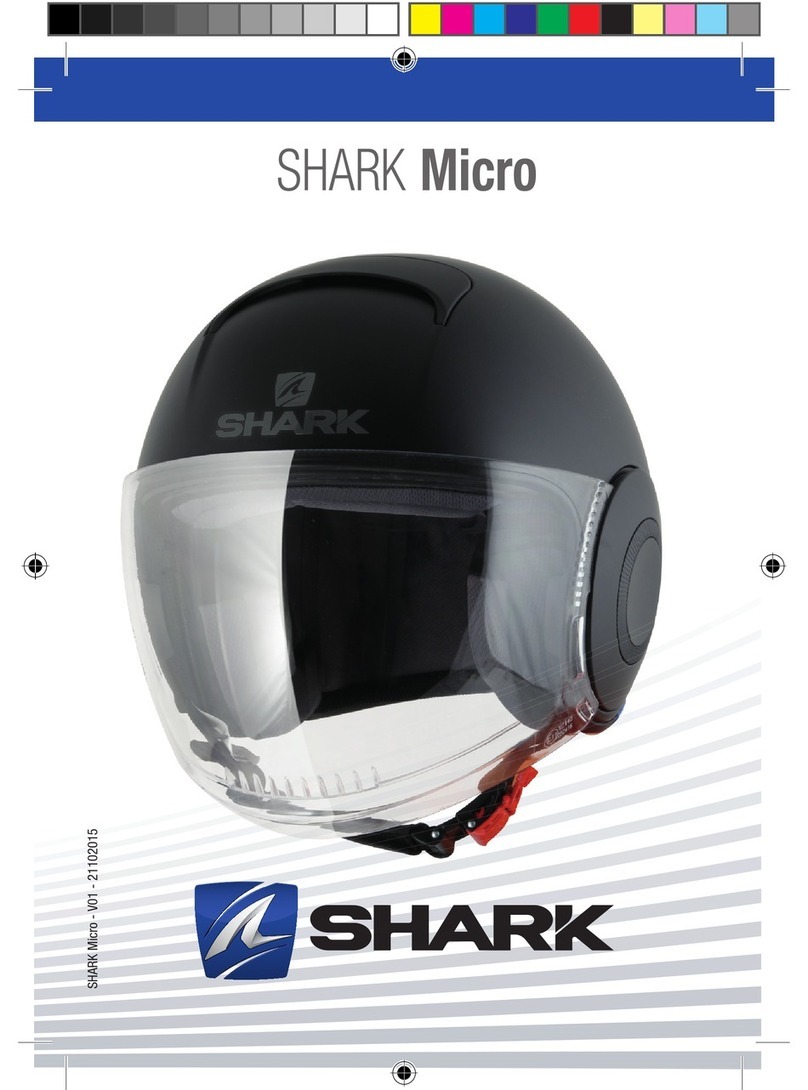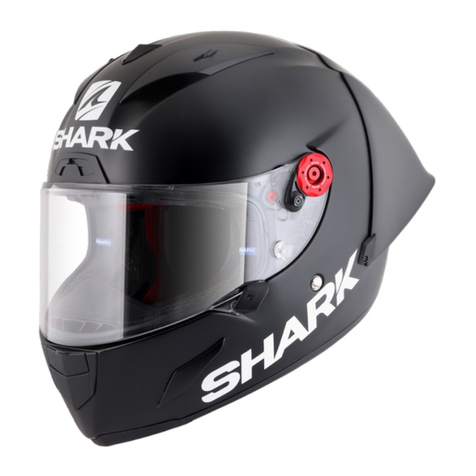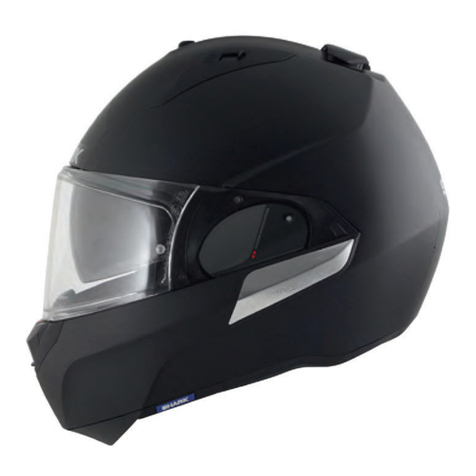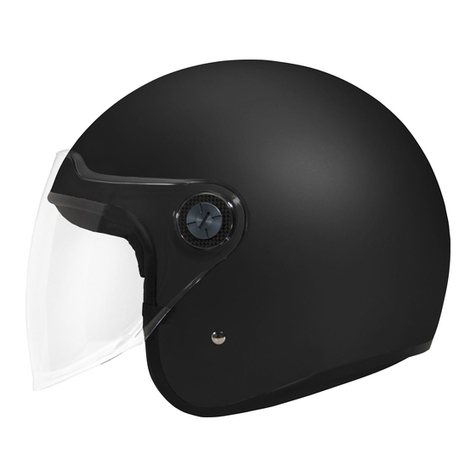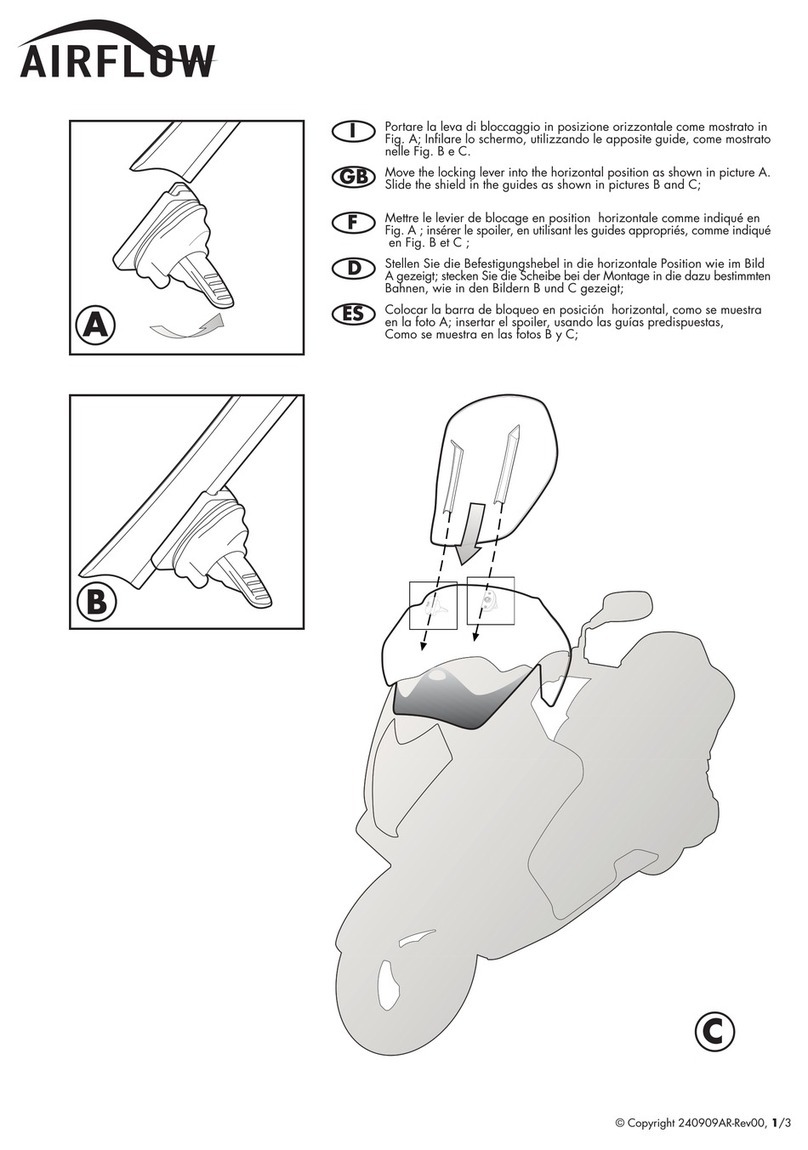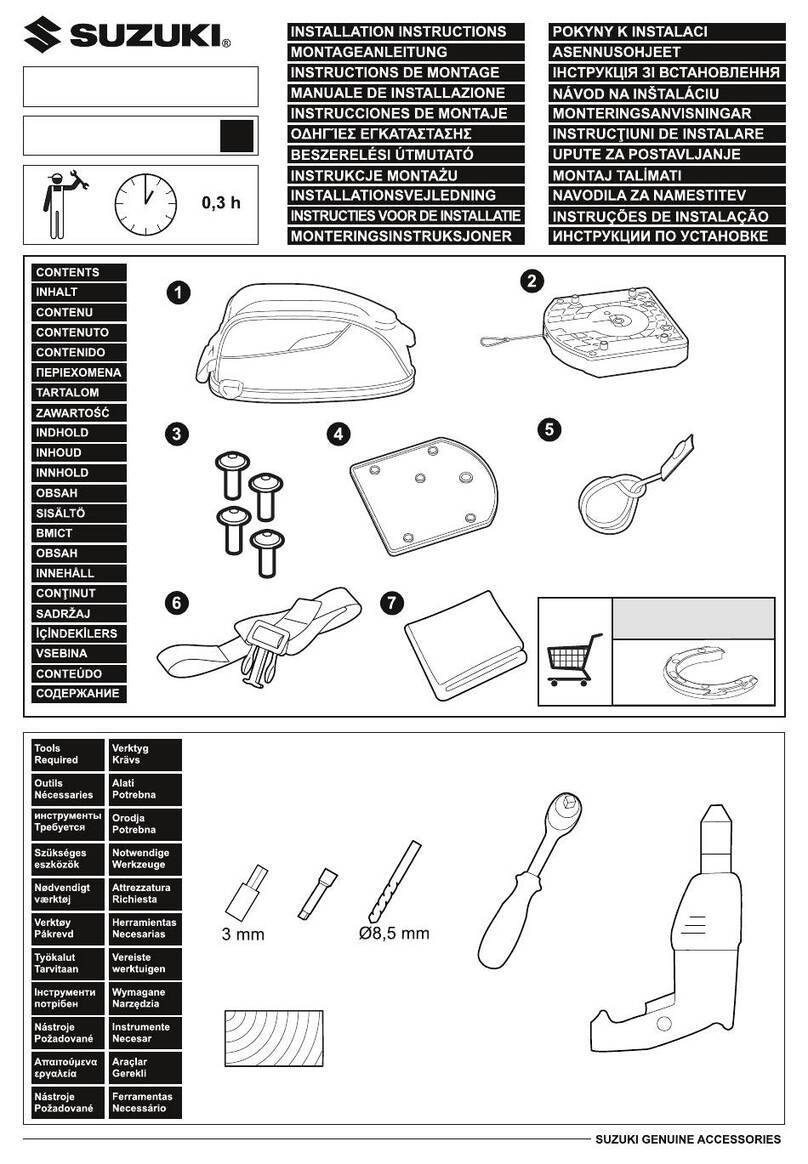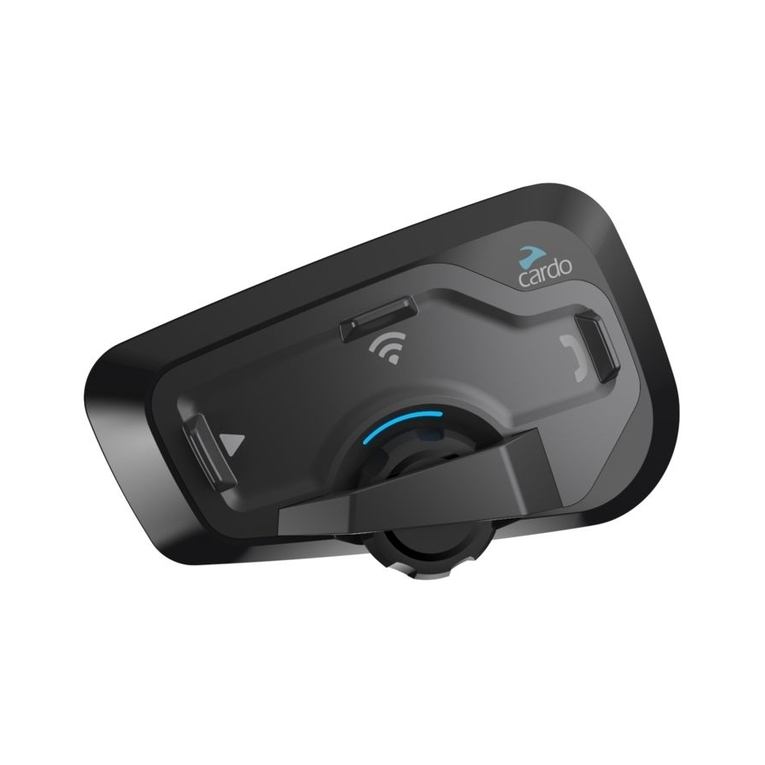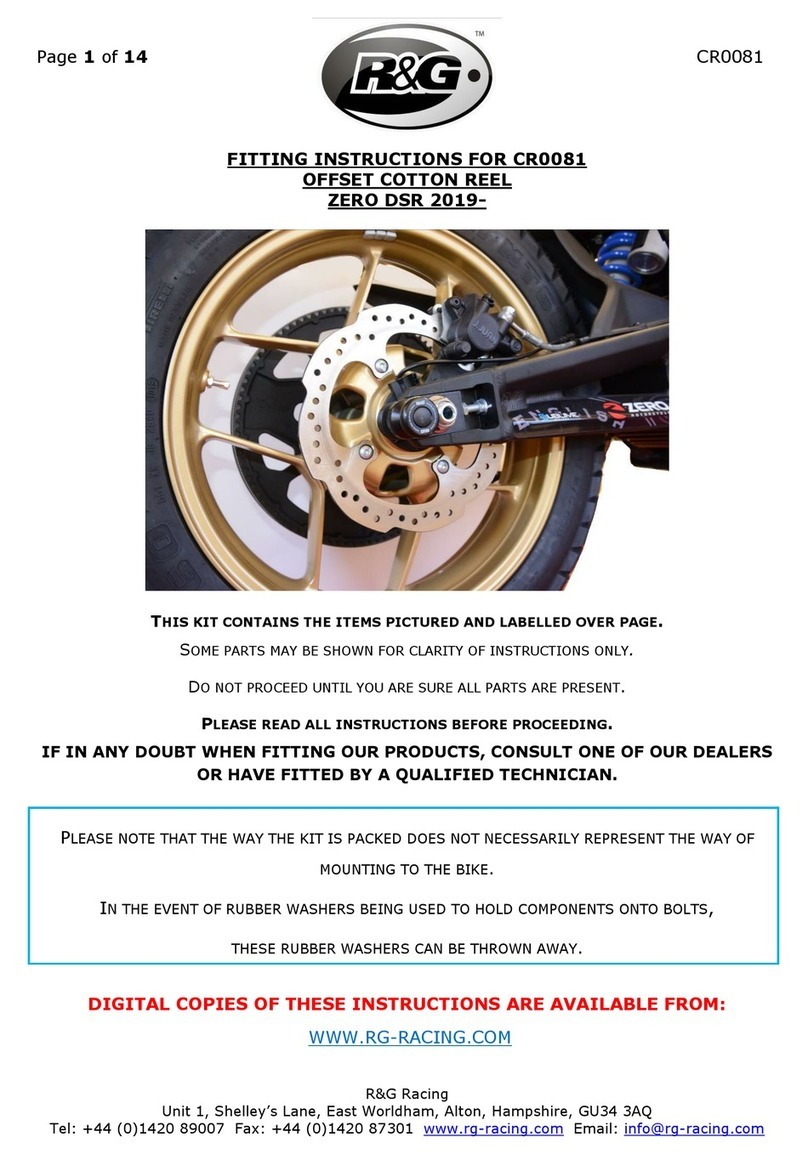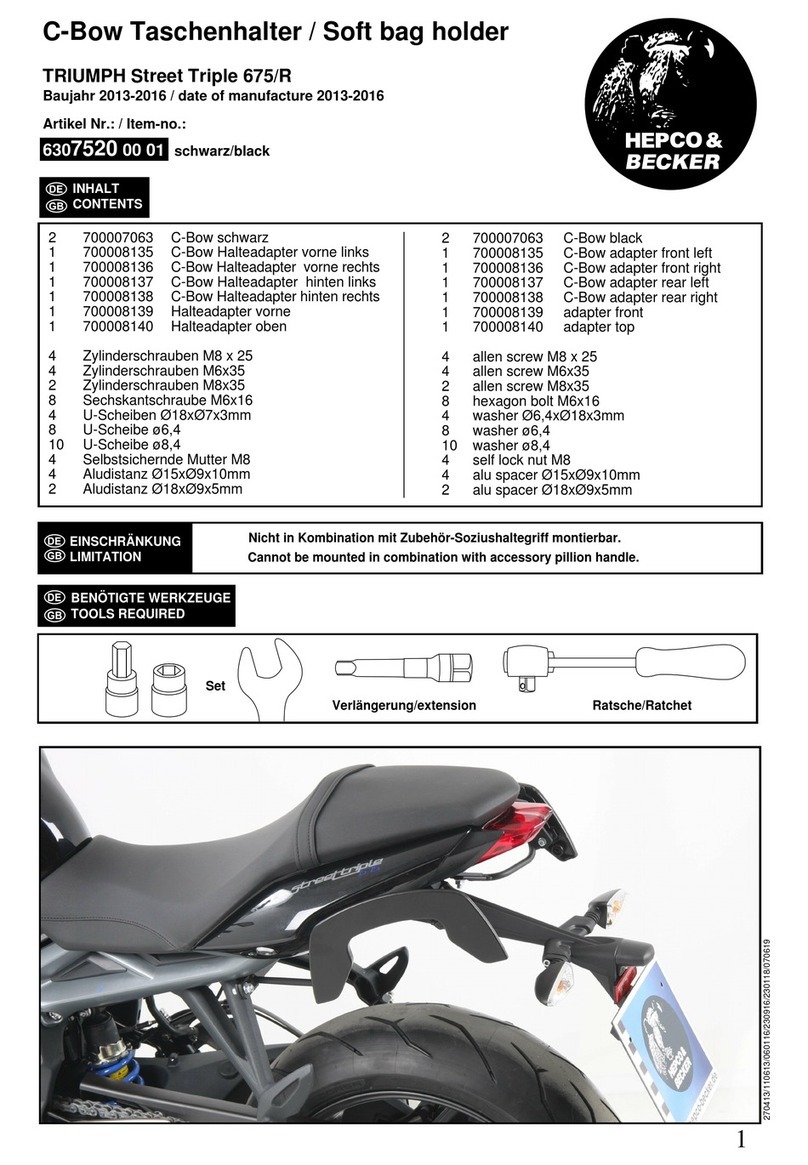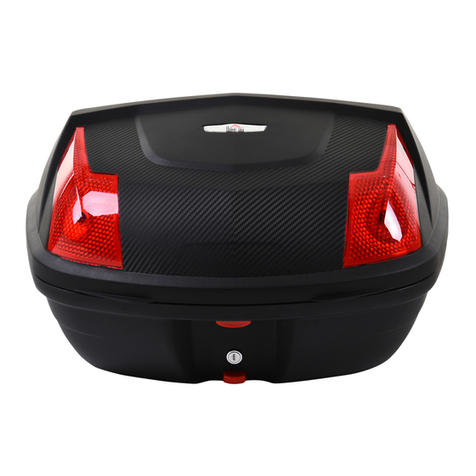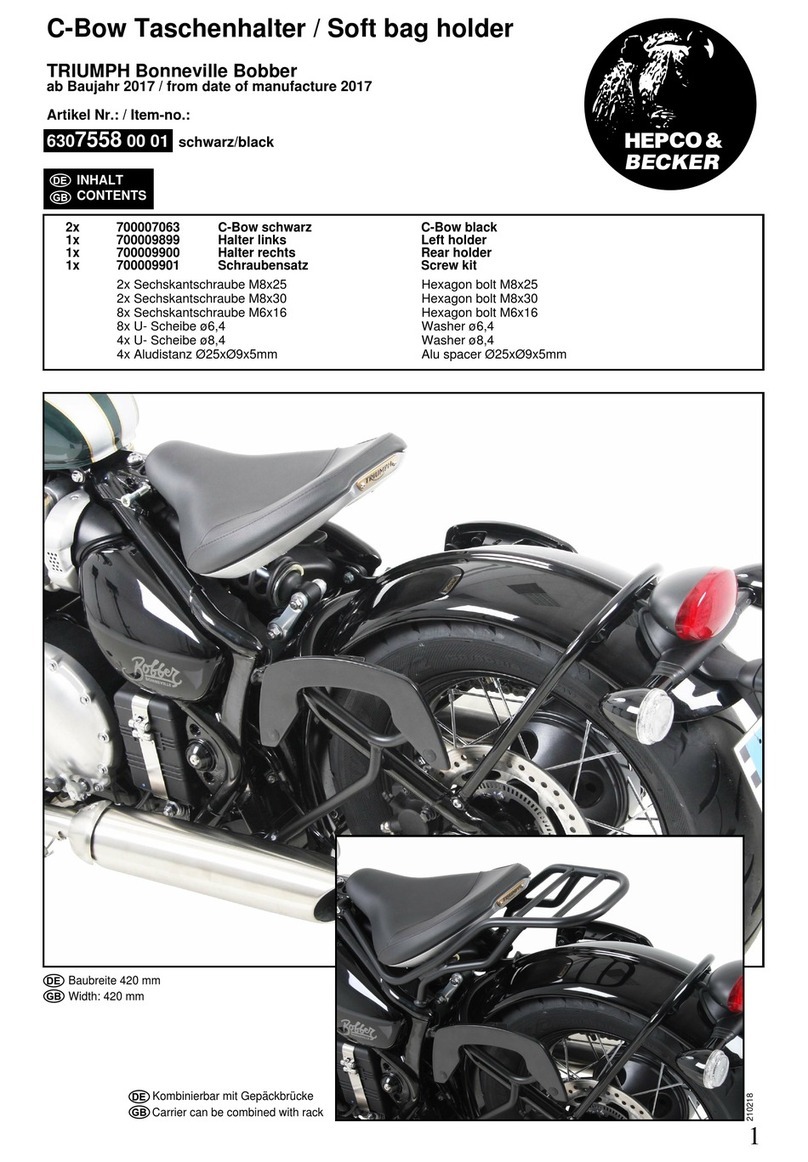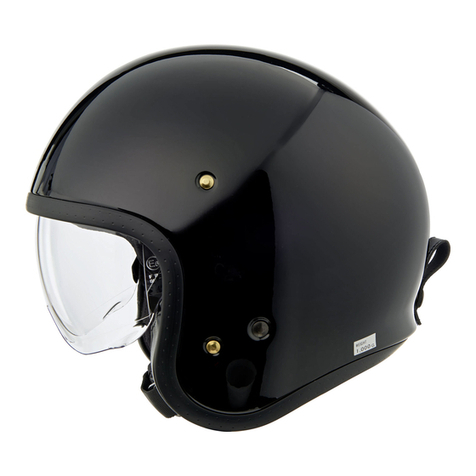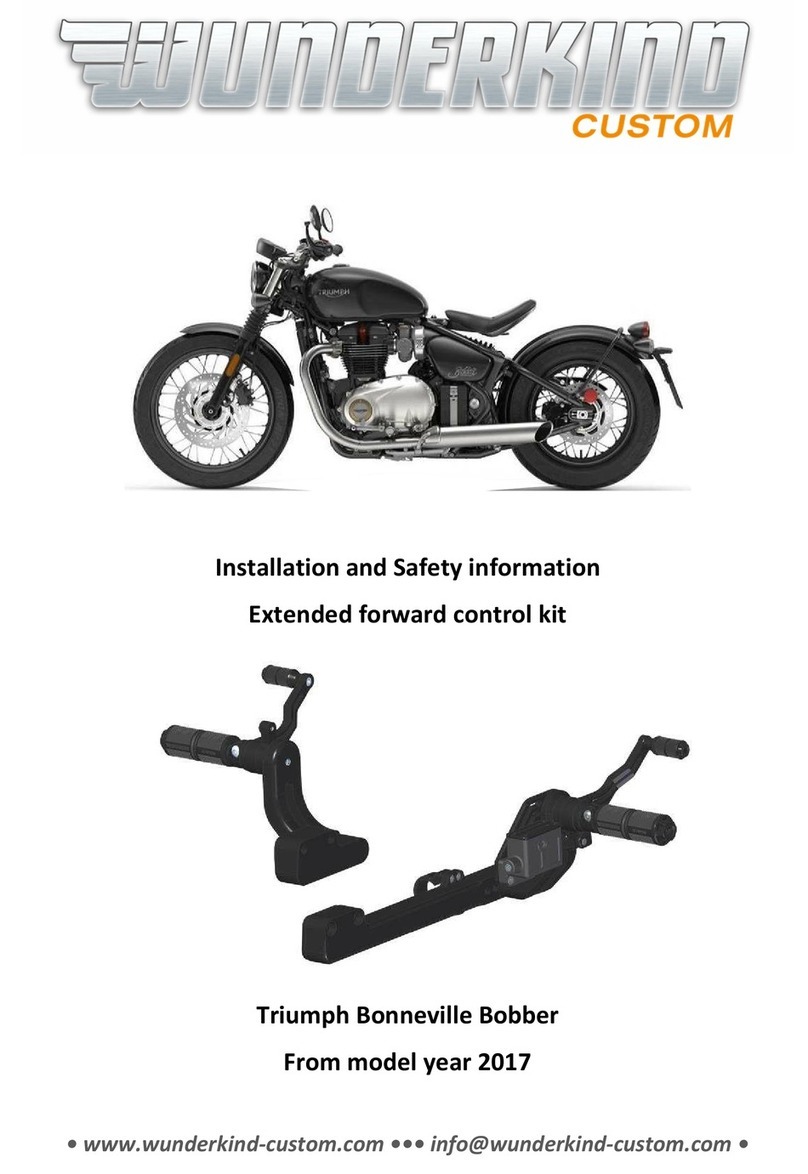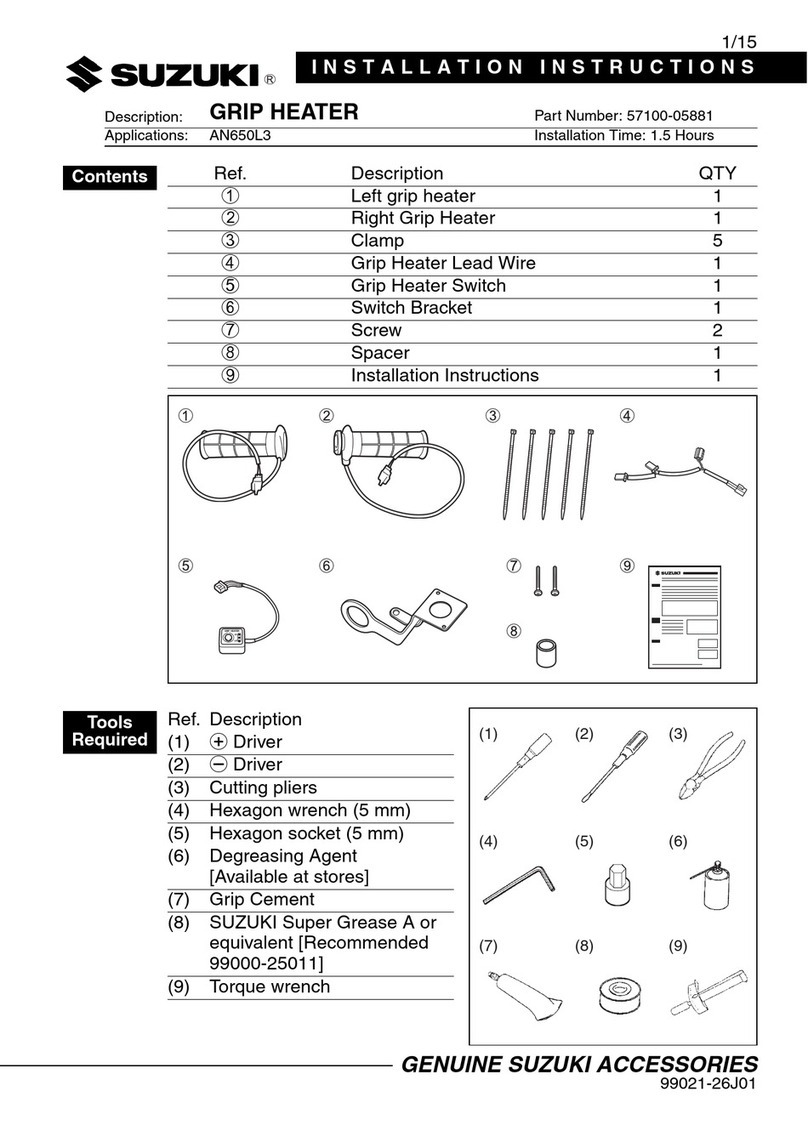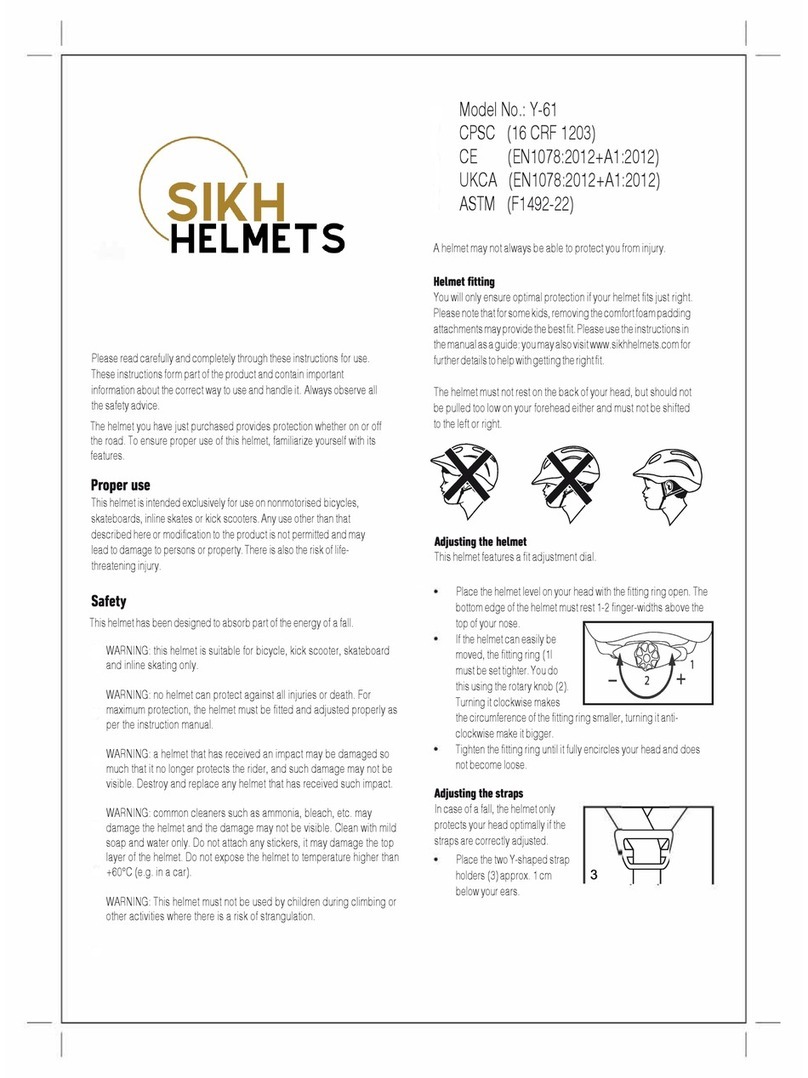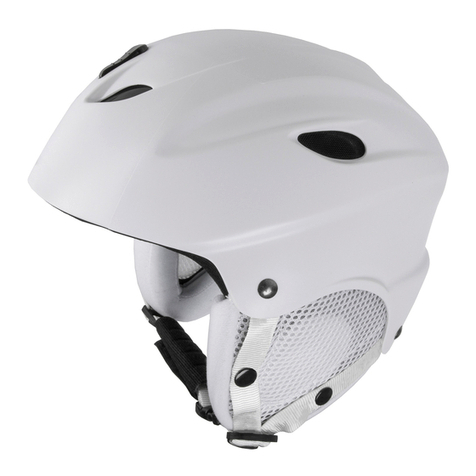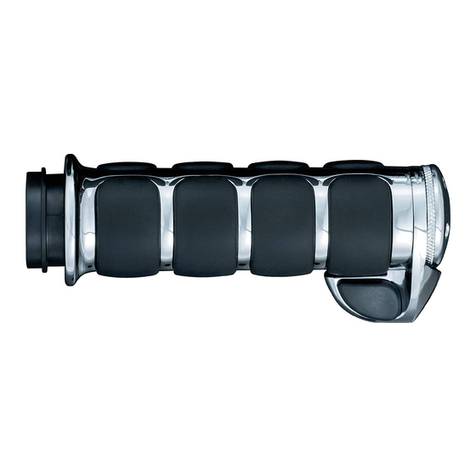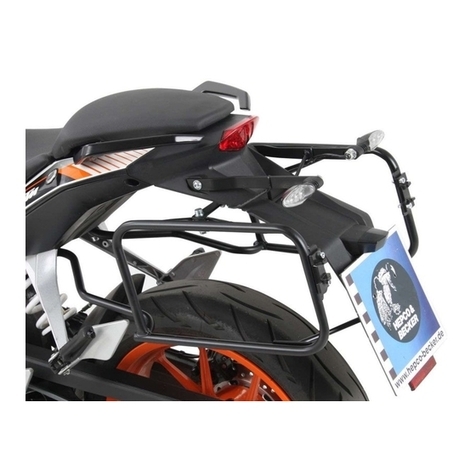
2
WARNINGS and INSTRUCTIONS
1. Always be careful when riding. Even though
this helmet meets or exceeds global standards
applicable to helmet manufacturing, still it
cannot fully protect the user from all possible
shocks at both high and low speeds. Every type
of safety gear has its limitations, and a head
injury is indeed possible in an accident even
when a helmet is being worn. Nonetheless, in
order to be protected from a fatal accident or
permanent disability due to a head injury, the
helmet size must absolutely correspond to the
size of your head; moreover, the chin strap
must be adequately tightened, as indicated in
this manual.
2. This helmet has been designed so as to absorb
the impact by the partial destruction of the
shell and/or internal damper. This damage may
not in fact be visible. Consequently, should the
helmet be subjected to an impact, even in the
event of simply being dropped on the ground, it
must be returned for verification, replacement or
disposal, regardless of whether any deterioration
is apparent. In case of doubt and if you’re not
sure whether this rule applies to the shock
in question, contact your retailer prior to any
subsequent use of the helmet.
3. Like all products, a helmet can become
deteriorated over time under normal use
conditions. Before each use, be sure to inspect
the helmet for any sign of deterioration or
damage. The helmet size must always correspond
to your head size. If such is no longer the case,
then the helmet has expanded and you’ll need to
replace it. Never wear a damaged helmet. Even if
the helmet is not damaged or deteriorated, it is
recommended to buy a new one every five years.
4. No modification is ever to be made to the
helmet. Never drill or cut any helmet component.
Even the slightest modification can degrade the
helmet and, as a result, reduce its protective
capacity in the event of an impact.
5. Handle the helmet with the utmost precaution.
Never sit on it or throw it on the ground. Never
ride with the helmet dangling on any part of
the bike.
6. Never use gasoline, petroleum products,
chemicals or any solvent when cleaning the
helmet, the shell or the visor. Moreover, never
expose your helmet to the vapours of these
solvents (e.g. by leaving it on the plug of
your motorcycle gas tank). The helmet may
become seriously damaged by these chemical
agents, without being readily noticeable, thus
compromising your protection. Only use mild
soap, warm water and a soft cloth to clean and
wipe both the helmet and visor.
7. Never apply paint,decals or adhesive tape onto
your shell or visor. These items may damage your
helmet, without being readily noticeable, thus
reducing your helmet’s level of protection.
8. When wearing the helmet, your hearing will
be less acute, and both your field of vision and
head movements will be constrained. Be sure
to adapt your riding to account for this sensory
impairment.
9. Dry your helmet at room temperature. Never
expose it to a temperature above around
160°F/70°C, which could occur for example if
your helmet is left on the passenger seat or in
the boot of a car.
Always keep the helmet far from heat sources,
such as the bike’s exhaust pipe or the top case.
10. For any question or comment regarding your
helmet, please contact the SHARK Company or
your nearest retailer.
We do not guarantee the capacity of this
product to fully protect its user against all
possible shocks at either high or low speed, or
against all potentially fatal injuries. The helmet
user hereby acknowledges and recognises
the presence of risks inherent in riding a
motorcycle, which are not strictly restricted to
shocks, regardless of their magnitude, at high
or low speed. By purchasing and using this
product, the user is expressly assuming and
accepting, willingly and knowingly, these risks
and moreover discharges the SHARK Company
of all liability, up to the maximum limit allowable
under the law, for any damage that may occur.
ANATOMY OF THE HELMET
